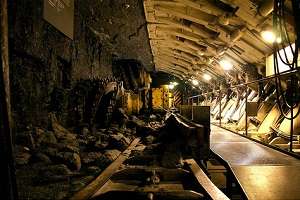Experimental blasts predict tunnel collapse severity

Safety in underground mining sites could be improved with research that reveals the speed at which collapsing tunnels eject rock debris from their side walls and tests the effectiveness of current containment measures.
Kalgoorlie based Western Australia School of Mines (WASM) researcher Ayako Kusui is studying the speed of ejected debris as part of a study testing the strength of various materials used to line mining tunnels.
"Once we know how violent the ejection is, then we can start to work on containment measures," says Ms Kusui at the Diggers and Dealers Mining Forum in Kalgoorlie–Boulder this August.
"We have more testing to do as each earth and sand type will influence the ejection speed. Also the deeper the mine and tunnels the more likely [collapse] is to occur, which will also affect the ejection speeds.
"We're planning future tests with mesh and rock bolts.
"For now because it is impossible to test real mining tunnels collapsing, we are doing the tests on a very small scale. I can repeat the tests quite easily and try different materials."
Ms Kusui uses a 20cm diameter tube made of locally available concrete and sand to simulate the tunnel.
This is then inserted into a hole drilled into a 20 x 40 x 40cm cut sandstone block. The block and tube are compressed in a hydraulic press till destruction to replicate a mining tunnel collapse.
A video-camera records the compression and fracture of the tube. Then by measuring the difference in distance the debris has travelled in each frame, Ms Kusui is able to calculate the speed of ejection.
Early data from comparison testing using unsupported tubes and those supported with 5mm of shotcrete (concrete projected onto a surface at high velocity) shows it reduces the ejection speed from 6.3 to 3.6m/sec.
"Even at these speeds I would not like to be standing in a tunnel when that happens," Ms Kusui says.
Local mining engineer, Malcolm Jolly says the project is relevant to the industry.
"The Goldfields mines are subject to sideways or horizontal pressures, so this work will be very valuable to the region's mining industry."
Provided by Science Network WA

















